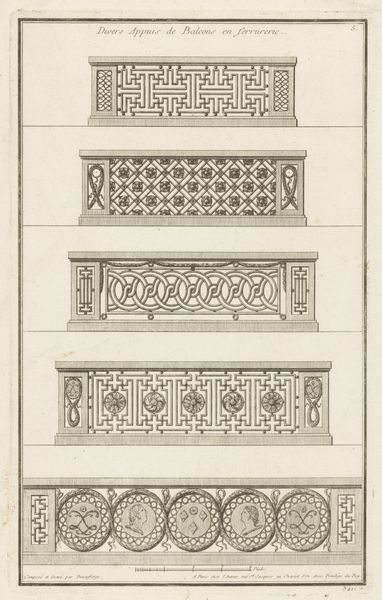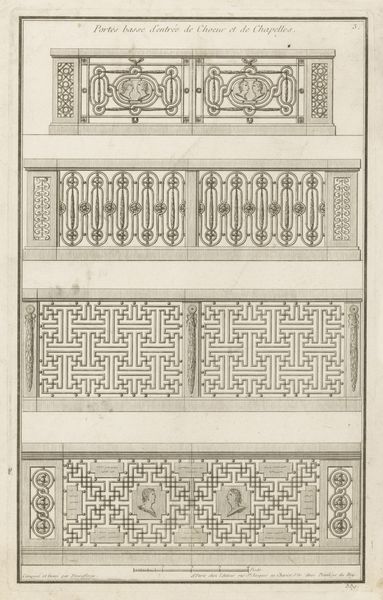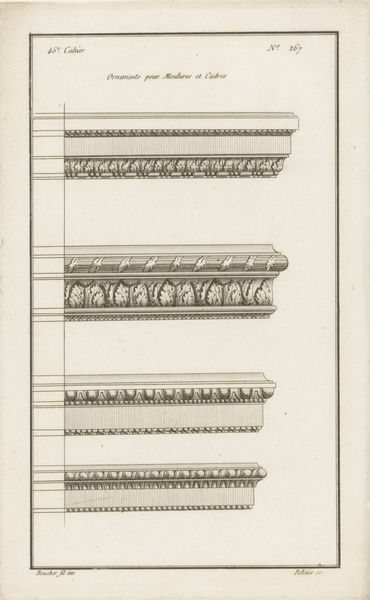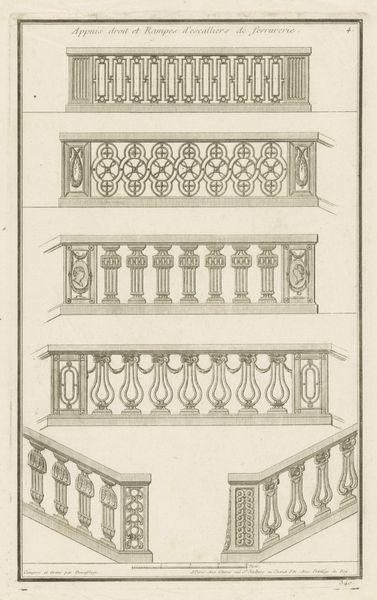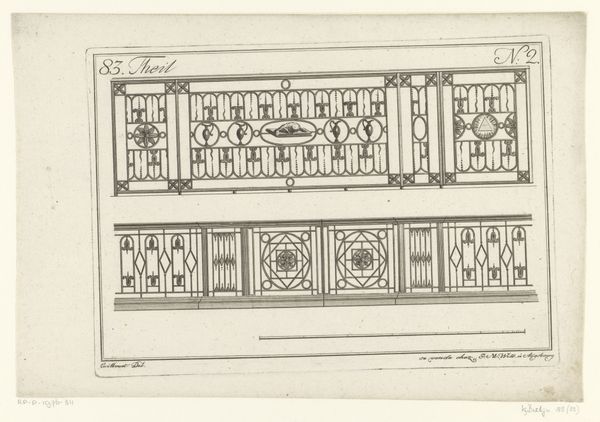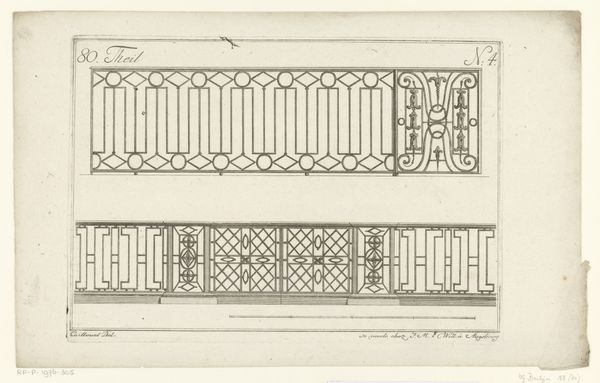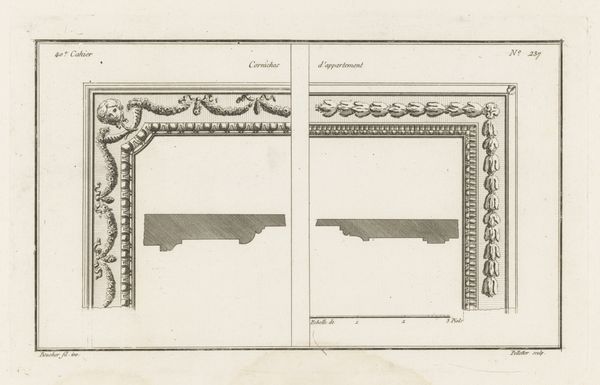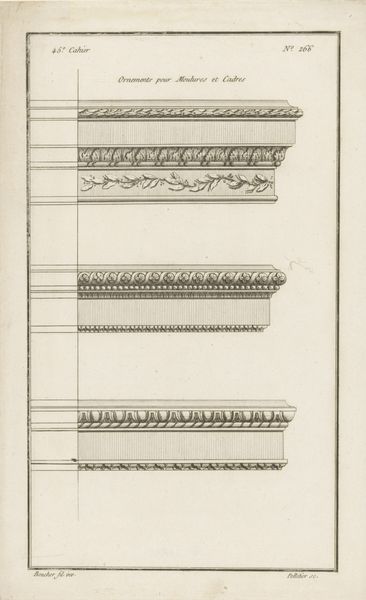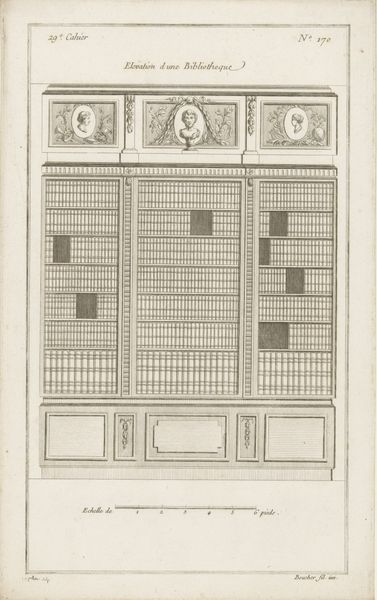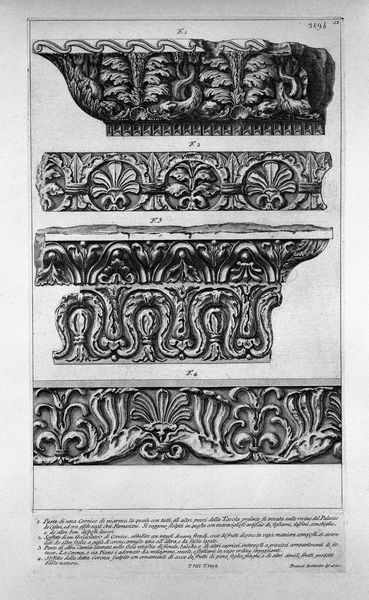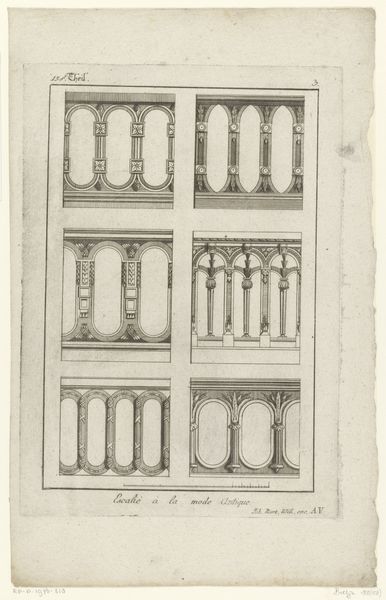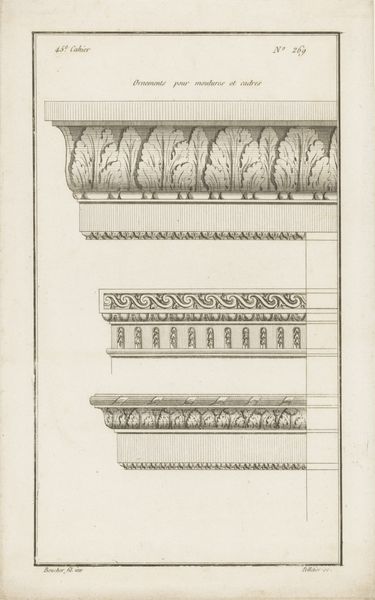
drawing, print, engraving, architecture
#
drawing
#
neoclacissism
# print
#
geometric
#
decorative-art
#
engraving
#
architecture
Dimensions: height 359 mm, width 225 mm
Copyright: Rijks Museum: Open Domain
Curator: Here, we have Jean François de Neufforge’s "Balkonhekken voor ramen," an engraving dating back to 1763, currently housed in the Rijksmuseum. It showcases different designs for balcony railings. Editor: My initial impression is a certain austerity, even severity. While the designs incorporate curves, the overall effect is linear and ordered, suggesting a society deeply valuing control and precision. Curator: Absolutely. Neufforge was working within the Neoclassical movement. This involved drawing on historical Greek and Roman styles. There’s a sense of civic virtue expressed through geometrical harmony, a rationality reflected in each precisely rendered balustrade. It suggests the burgeoning ideals that lead into the revolutionary era, doesn't it? Editor: I'm immediately drawn to the use of repeated shapes – circles, rectangles, intertwined patterns. Each motif carries historical weight, reflecting a longing for a classical past. But I wonder about the limitations such rigidity imposes, almost as if restricting freedom itself. Doesn’t decorative art always operate this duality – ornamentation and the setting of symbolic limits? Curator: Interesting. In contrast, I perceive it more as the establishment trying to impose order amid societal instability. What you see as a restriction of freedom, I observe as an aspirational blueprint—projecting sophistication on emerging social consciousness through idealized geometries and ordered beauty in a turbulent time. What these barricades are truly keeping outside of, at an angle, could have social class dimension too. Editor: Perhaps the repetition offers reassurance through familiarity—a visual anchor amidst the change. Yet, there's still an undeniable symbolic echo. Curator: Indeed. The language of geometry and decoration has been politically charged and can’t be viewed from only an esthetical position. Editor: Ultimately, the emotional tenor remains in a kind of harmonic echo across the centuries. Curator: Yes. That this echoes the struggle between freedom and constraint is part of art history, and the continuing symbolic work of public decoration.
Comments
No comments
Be the first to comment and join the conversation on the ultimate creative platform.
